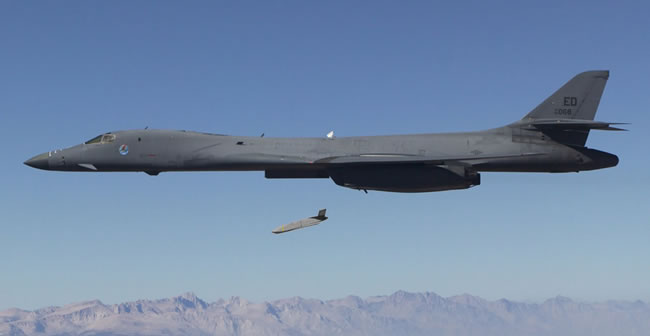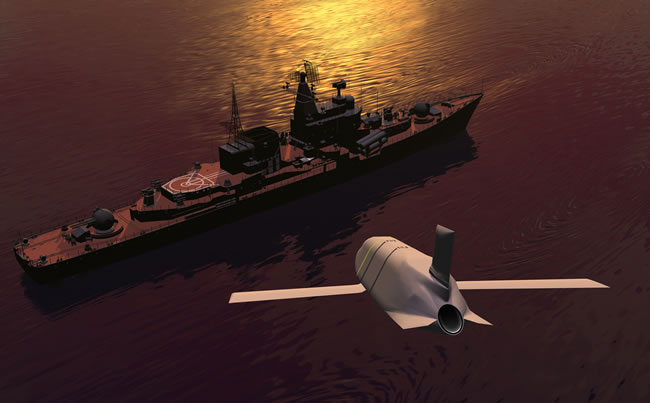
The Defense Advanced Research Projects Agency (DARPA) has added a third flight test of an air-launched Long Range Anti-Ship Missile (LRASM) to be conducted from a B-1B in 2013. There are already two air-launched flight tests scheduled for this year as part of the Phase 2 LRASM contract awarded in 2010. The agency awarded Lockheed Martin has received a $71 million Long Range Anti-Ship Missile (LRASM) modification contract to conduct air- and surface-launched flight tests and other risk reduction activities.
“This contract modification furthers the development of LRASM as we are committed to provide the Navy with an offensive anti-surface weapon (OASuW) alternative that is compatible with multiple platforms,” said Mike Fleming, LRASM air-launched program manager at Lockheed Martin Missiles and Fire Control. What makes the B-1 unique versus the other aircraft is its capability to carry 24 JASSM class weapons. With such capability, two bombers can take out an entire enemy fleet destroying 48 different targets on a single strike, or used against less targets, overwhelming the target defense by saturating attacks. The long range and stealth capabilities of the missiles will gain the advantage of surprise attack from stand-off range. The B-2 Spirit can carry 16 JAASMs and the B-52 Stratofortress can carry 12.
The contract also includes two surface-launched LRASM flight tests scheduled for 2014. Risk reduction efforts, such as electromagnetic compatibility testing of the missile and follow-on captive carry sensor suite missions, are also included under the contract.

LRASM is an autonomous, precision-guided anti-ship standoff missile based on the successful JASSM-ER, and is designed to meet the needs of U.S. Navy and Air Force warfighters. LRASM is in development with the Defense Advanced Research Projects Agency and the Office of Naval Research.
In addition to the air-launched capability LRASM is also considered for shipboard integration with the Weapon Control System and MK 41 Vertical Launching System. As part of this investment, Lockheed Martin successfully demonstrated the mission planning of a LRASM-based OASuW capability using a simulated surface ship Weapon Control System.
“Our company investment in shipboard integration, combined with the new surface-launch flight tests, will provide an integrated OASuW solution compatible with surface ships,” said Scott Callaway, LRASM surface-launched program manager at Lockheed Martin Missiles and Fire Control.
Armed with a proven penetrator and blast-fragmentation warhead, LRASM cruises autonomously, day or night, in all weather conditions. The missile employs a multi-modal sensor, weapon data link, and an enhanced digital anti-jam Global Positioning System to detect and destroy specific targets within a group of ships.

















